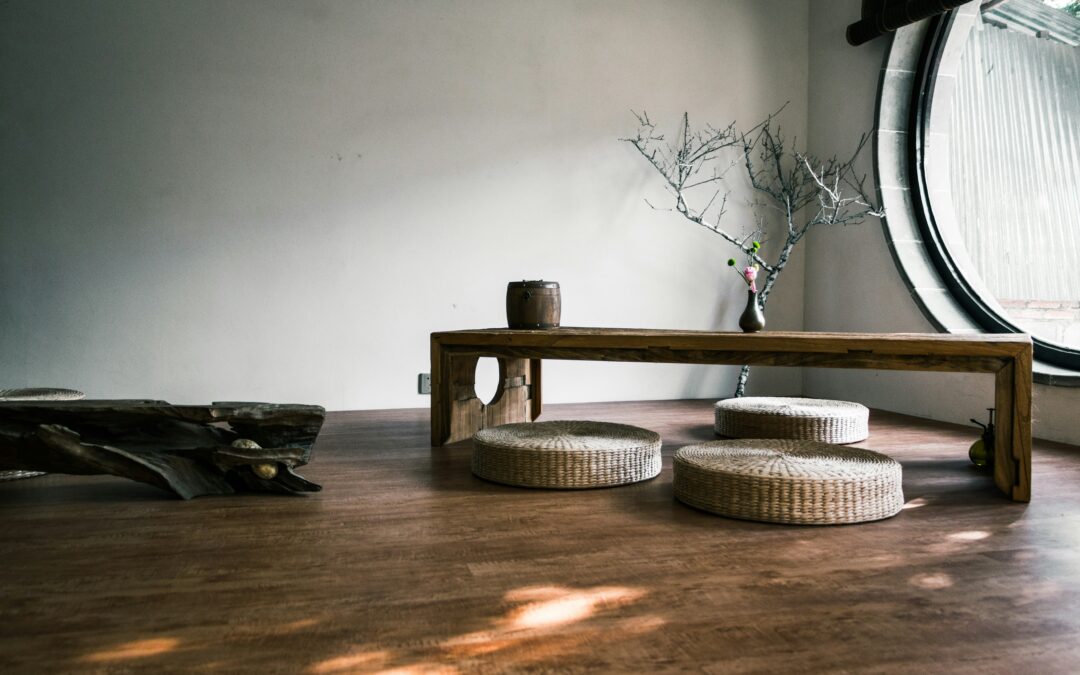AI is transforming the way we design and construct spaces in exciting new ways. While creativity still requires a human touch, AI lends a helping hand so we can ideate freely and bring visions to life more efficiently. In this blog, we will explore all the ways through which Artificial Intelligence has affected and changed the design and construction industry from top to bottom.
Sparking Design Inspiration
As interior designers, we are constantly seeking fresh ideas to delight clients. But mood board creation chews up valuable creative time. Now, AI algorithms can instantly turn the visual styles we love into bespoke inspiration collages. By feeding these tools designer motifs and client preferences, we can have an outcome that is a tailor-made springboard for concepts. Not only that, there are AI applications that only ask you to give them a picture of your existing design, and it provides dozens of new ideas to completely revamp your space.
The AI assistants also use space planning formulas to optimise room dimensions for circulation, sunlight and function. Rather than getting tangled in layout logistics, we can focus efforts on crafting that wow-factor aesthetic. The right balance of technology and touch.
Immersive Visualisations
One of the most challenging steps is helping customers visualise unfinished spaces; they always want to see the finished look before it’s done. But WOW – with AI, we can take 3D interior walkthroughs to dazzling new levels of realism. Using augmented and virtual reality, our clients can digitally traverse photorealistic kitchens, baths and backyard oases years before ground breaks. This is a breakthrough in the construction and design industry.
Moreover, these immersive technologies even support real-time customizations. Tweaking countertop finishes, lighting features, and tile work becomes an intuitive, playful experience that builds engagement through self-expression. And the quicker a client pre-approves details like these, the faster we expedite agreements and move forward. Kudos to AI for deeper design insights in less time.
Simplifying Material Selection
Specifying sustainable interior products can be a painstaking process. But let’s high-five AI for lightening the load. With machine learning algorithms rapidly analysing attributes from recycled content to emissions data, we get sound guidance in selecting responsibly. You don’t need to stress about making the design decision. The options and guidance are endless.
Another blessing is viewing digitally rendered material samples from suppliers without physical swatches. This can considerably cut costs and carbon footprints. Instead of relying on physical samples, we can now explore vast product libraries through online visualisation hubs. This allows us to make more informed material choices quickly and affordably, thanks to Artificial Intelligence.
Optimising Construction Efficiency
On the building side, inefficient planning and costly errors threaten budgets and peace of mind. AI optimization platforms tap algorithms to sequence construction activities on tight timelines while preventing mistakes. We save months mapping it all manually.
Clash detection analysis is another life-saver, where AI scans 3D architectural and MEP models to flag buildability issues before they happen. Plumbing through concrete columns? Ventilation blocking windows? Well, it’s the death of problems like these now. Design and Construction powered by artificial intelligence is a money-saving game changer for all of us.
Personalising Spaces with AI
Imagine designed spaces automatically responding to YOU – adapting colours, climate and music to match tastes. By observing human patterns and programming preferences, AI helps interiors transform dynamically. The hotel room glows with our favourite accent palette upon entry, while the stereo cues preferred playlists.
Even at home, AI learning our unique rhythms can customise environments room-by-room. Voice-commanded services from motorised window shades to aromatic diffusers further simplify interactions. Were you thinking about spaces personalised by artificial intelligence? It’s already here.
The Future with AI
One thing is for sure: AI opens up possibilities that were previously looking unimaginable in design and construction. We already see computers ideating geometries and penalizations that captivate human artists. Very soon, we will see robotic fabrication guided by AI assembling onsite modules for greater precision in a fraction of the project time.
In conclusion, we can say that human creativity still outshines AI in most ways, and AI has not reached its full potential to replace human creativity. Still, humans coupled with Artificial Intelligence can achieve the unachievable. Humans can make breakthroughs in the Design and Construction industry with new design ideas, immersive visualisations, achieving efficiency in construction, and personalising spaces with AI. Let’s inspire creativity and wait for what the future holds for design and construction.
FAQs:
Q1: How does AI help with design inspiration?
A: AI analyses visual data to quickly generate customised mood boards, space plans, and layout recommendations.
Q2: Can AI improve construction efficiency?
A: Yes, through optimizations in scheduling, clash detection, and eventually robotic assembly guided by algorithms, construction efficiency can be improved through AI.
Q3: Will AI overtake human creativity in design?
A: Not anytime soon. AI enhances and amplifies human imagination rather than replacing it. The main creativity still lies with humans, and right now, AI is dependent on humans for that.
Photo by Daniel Chen on Unsplash


